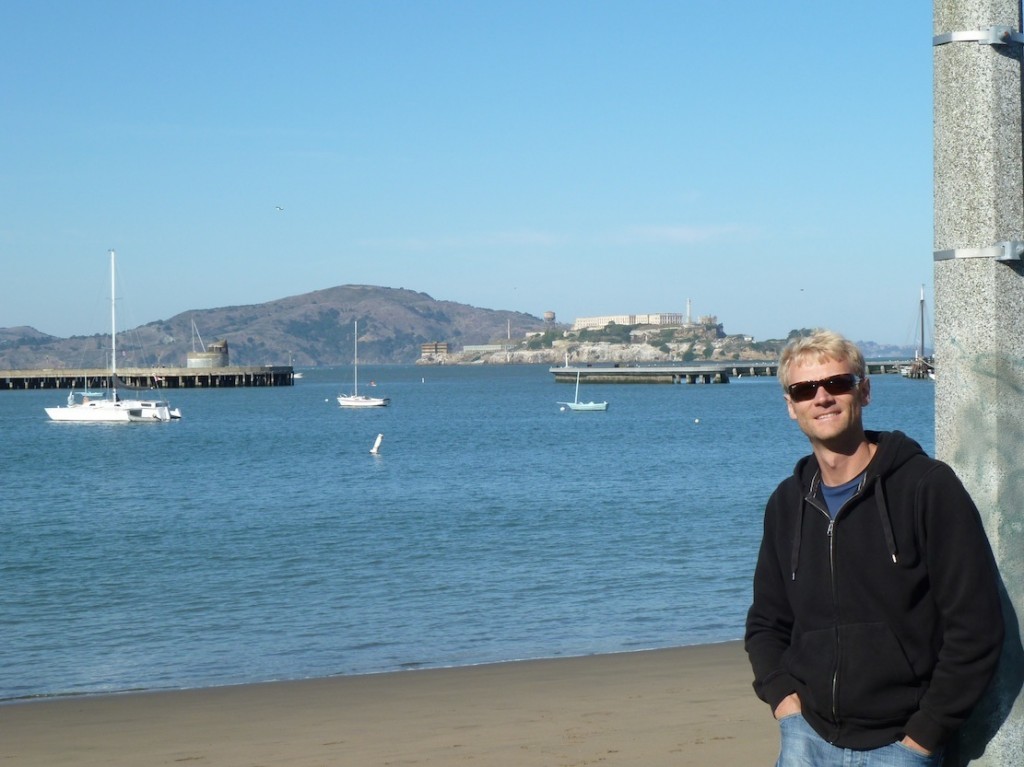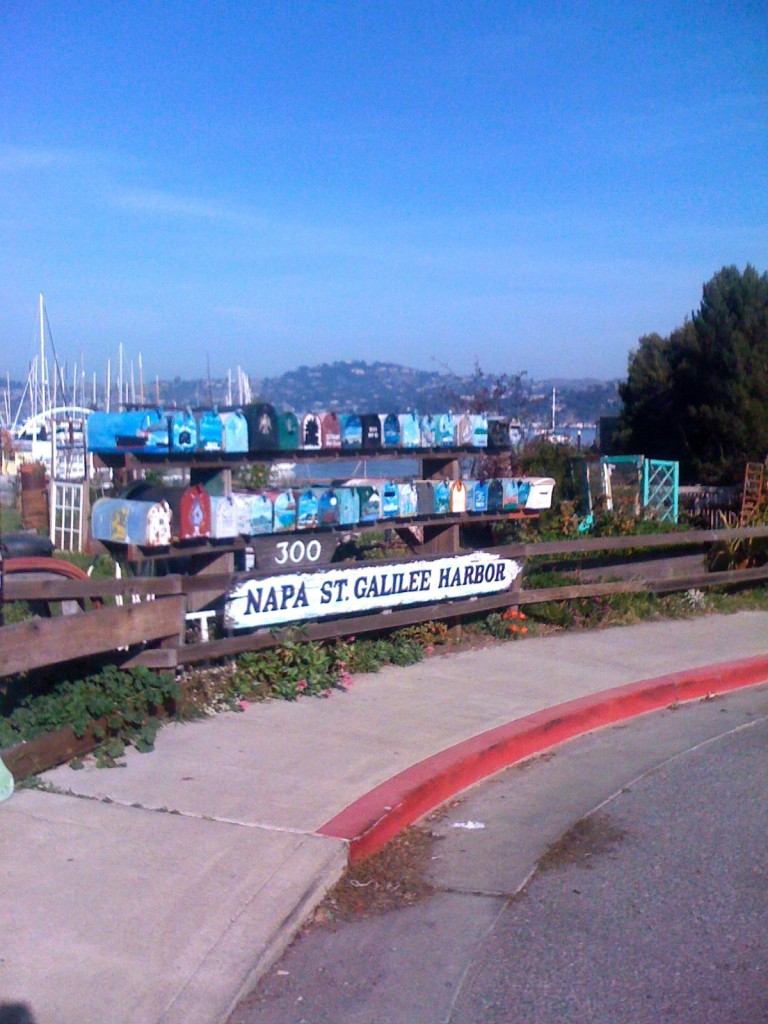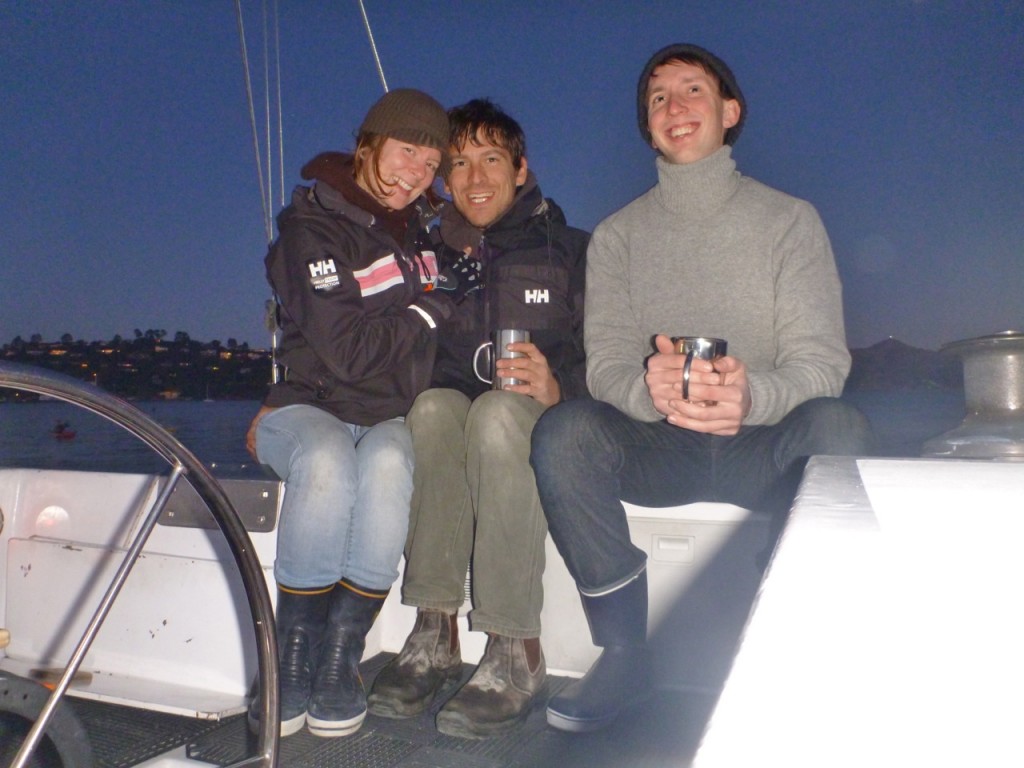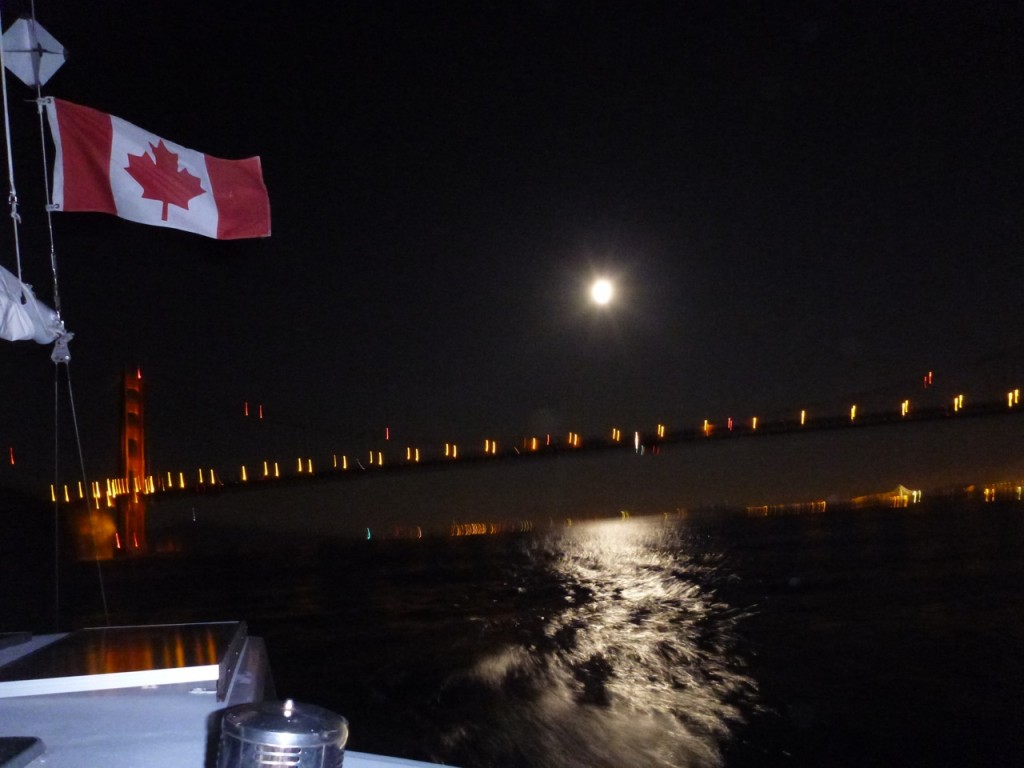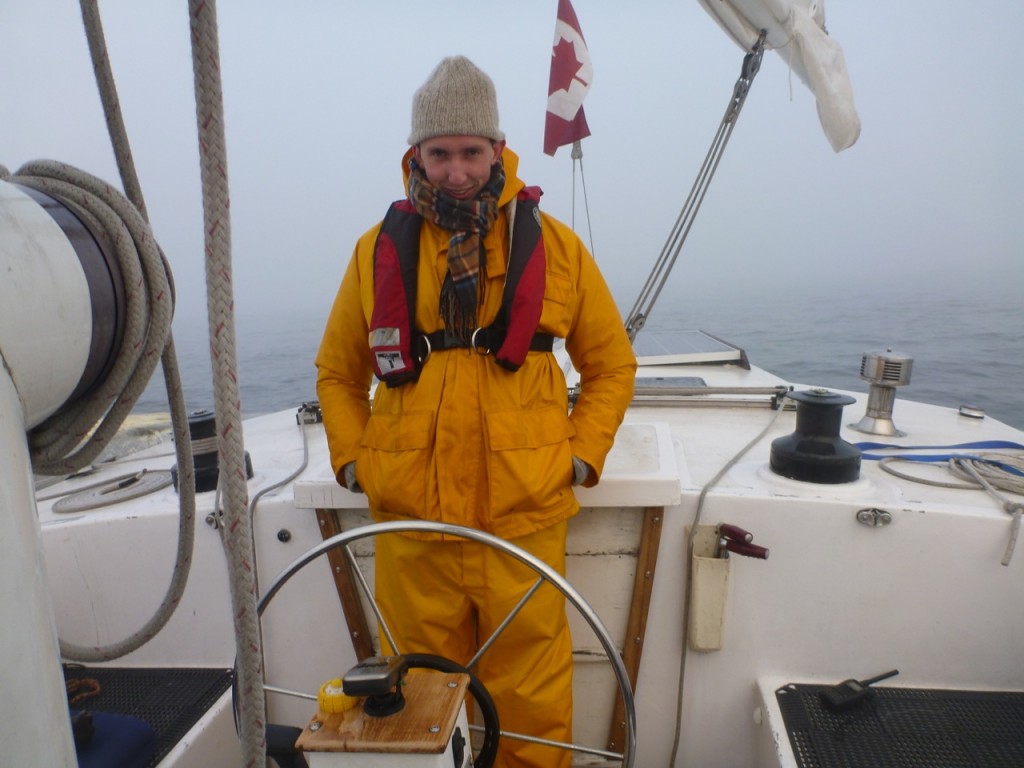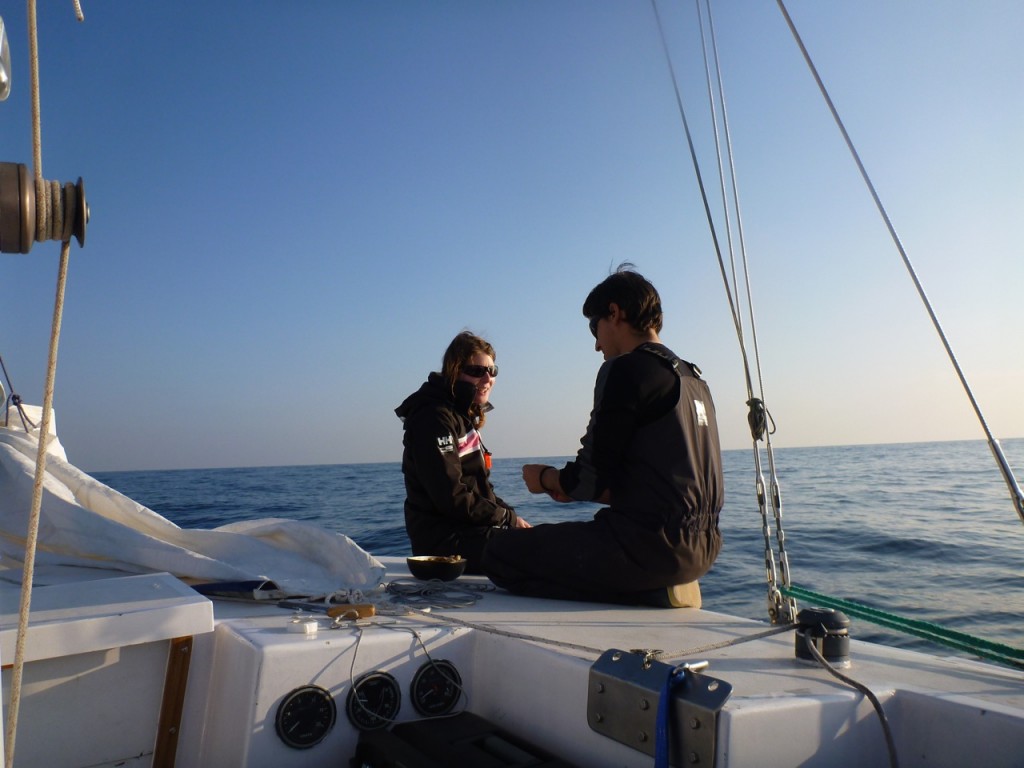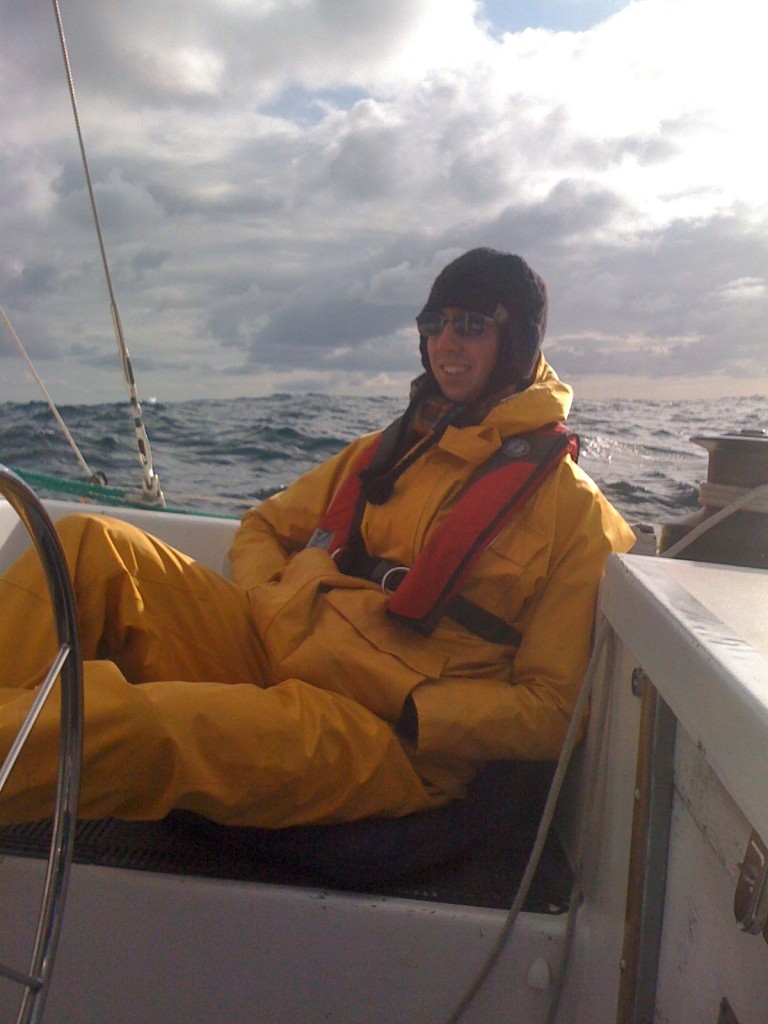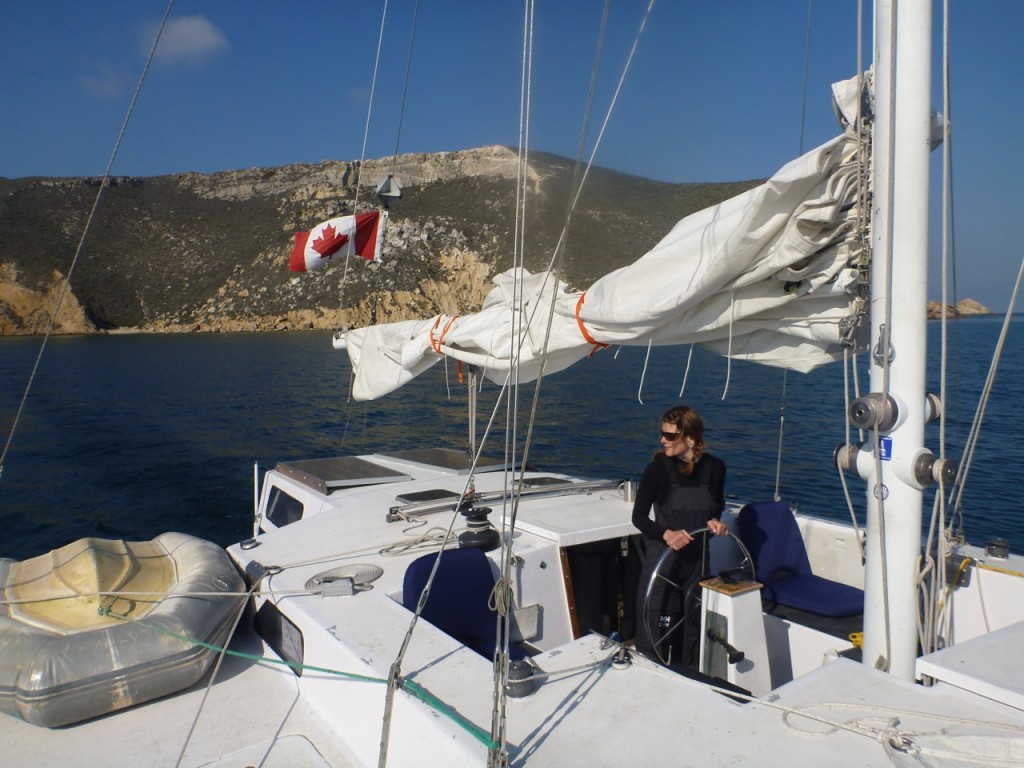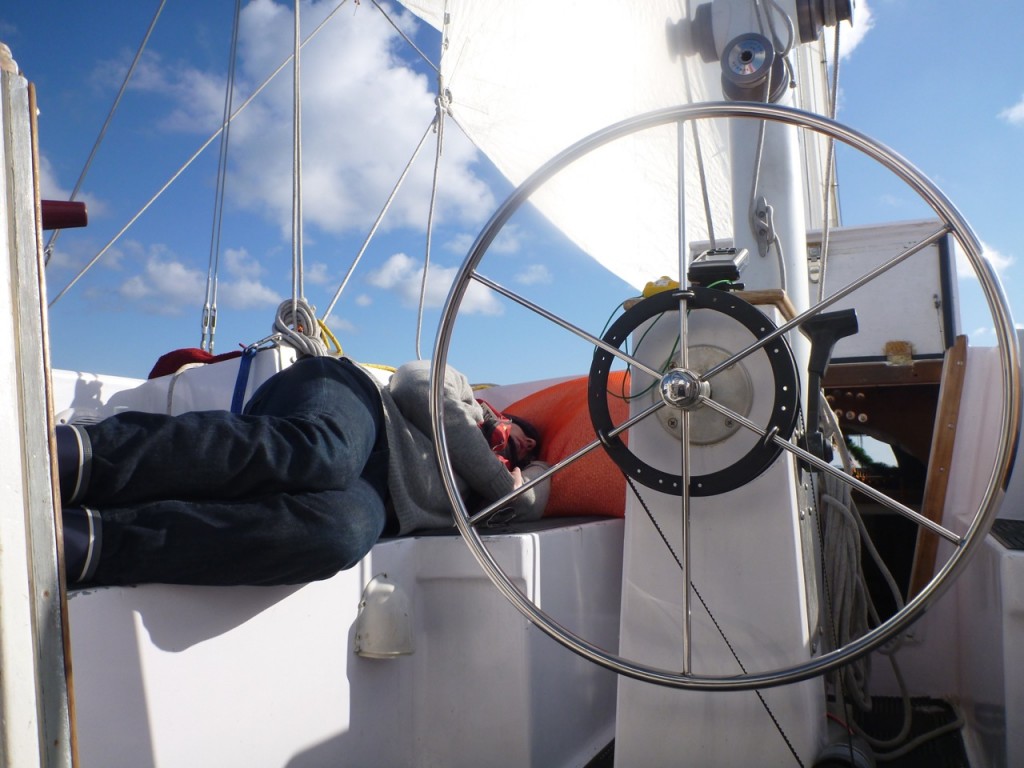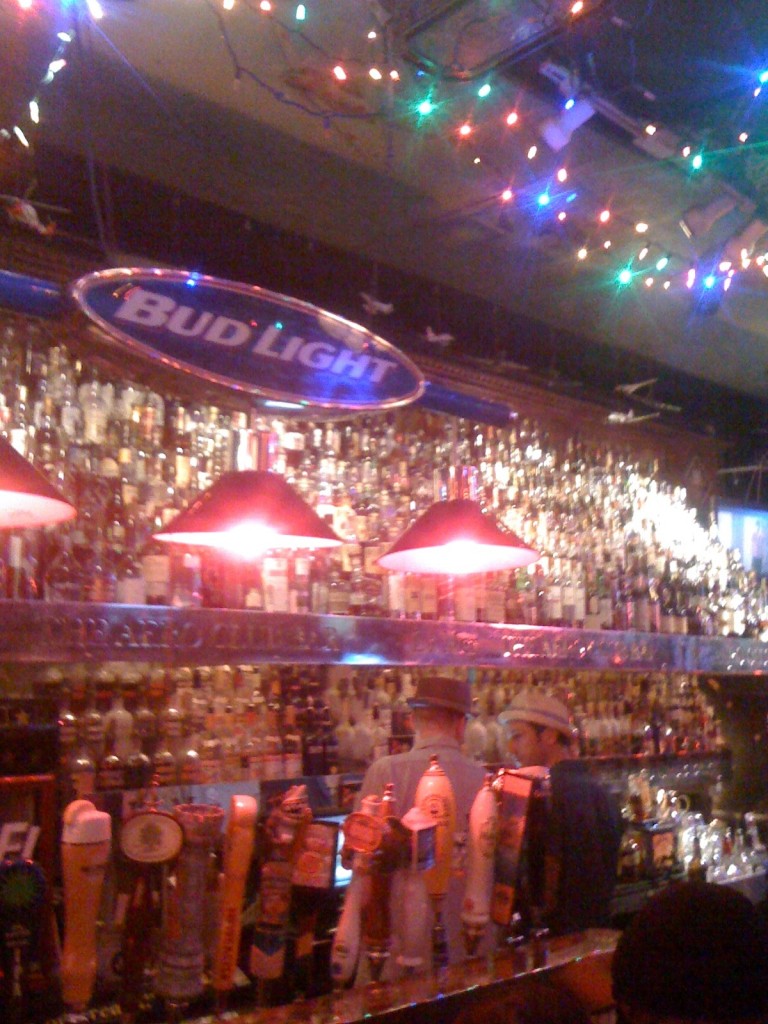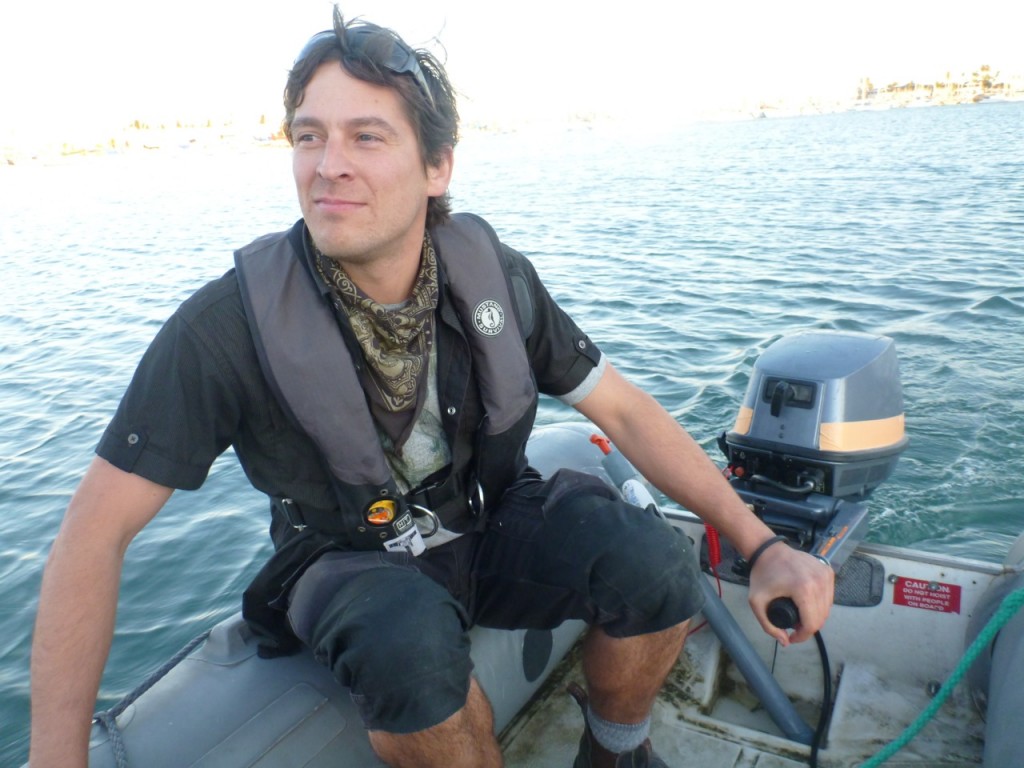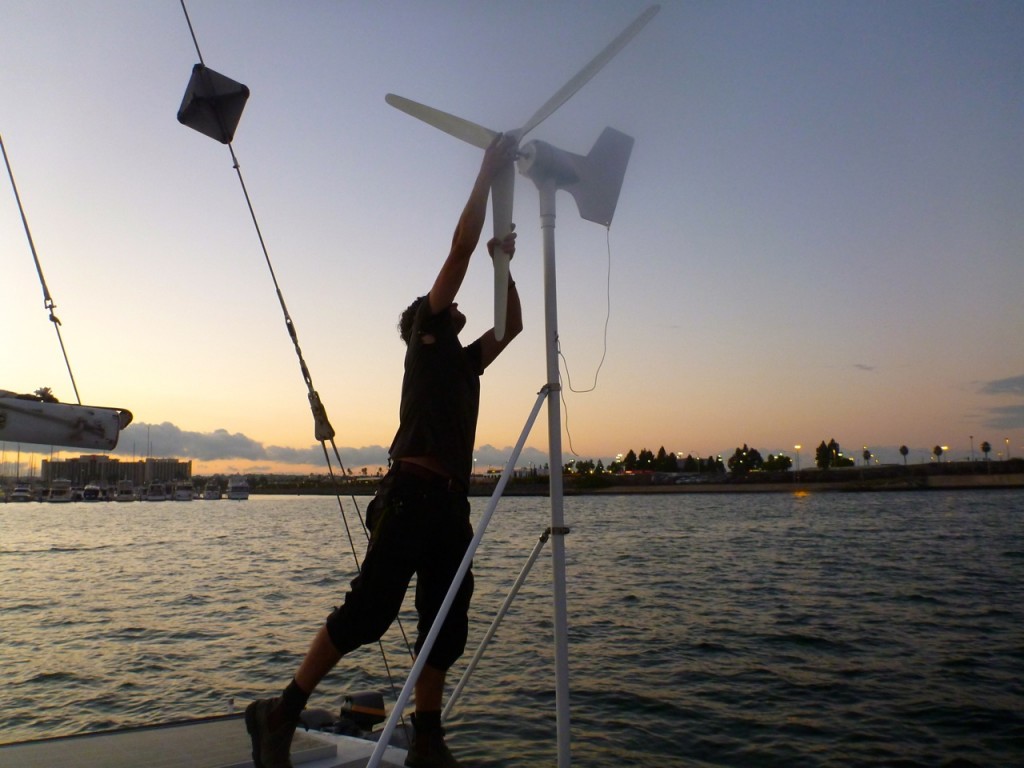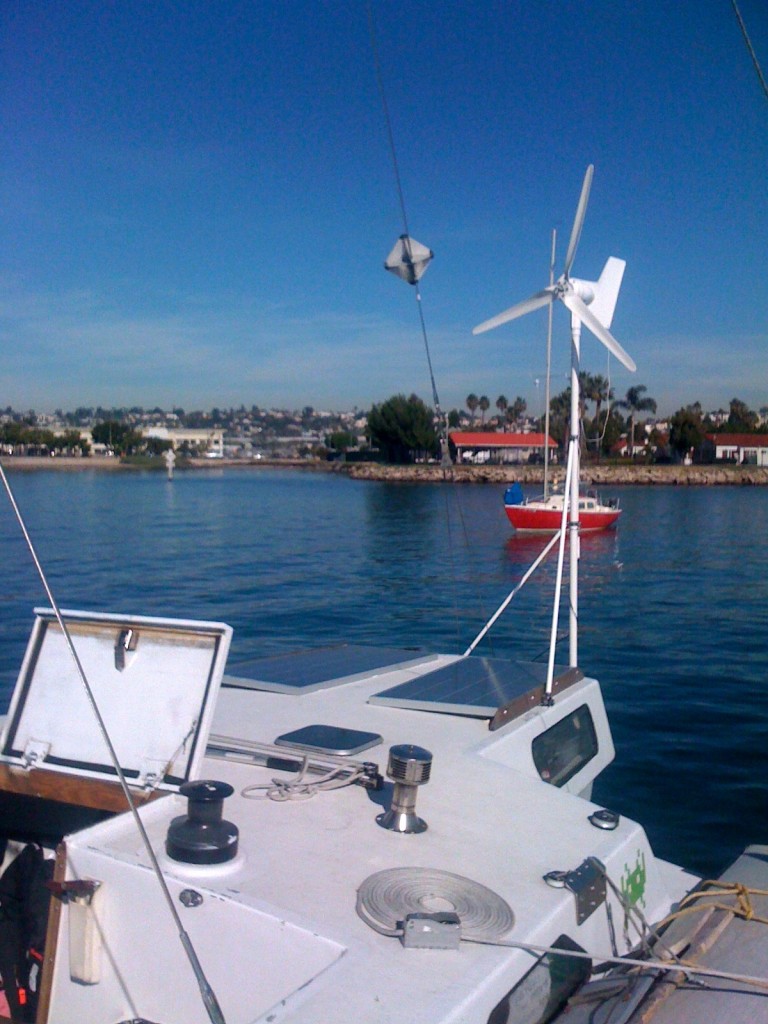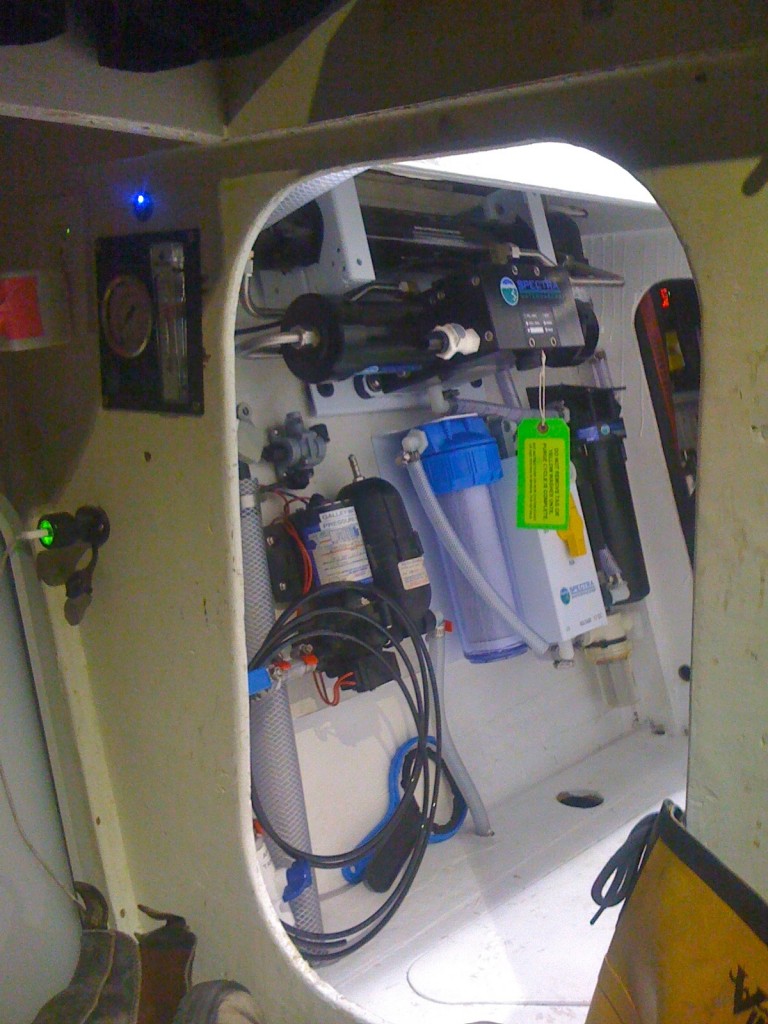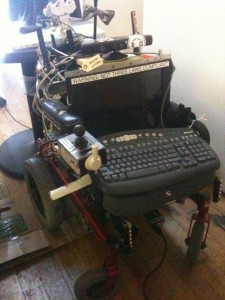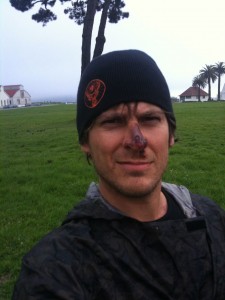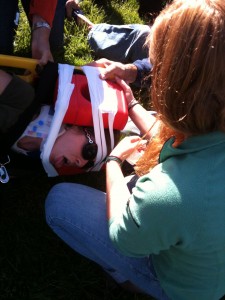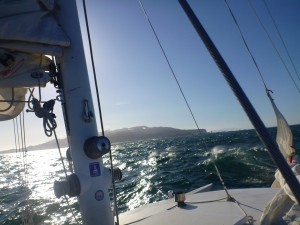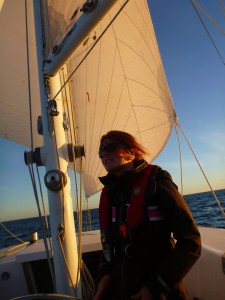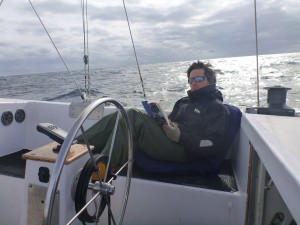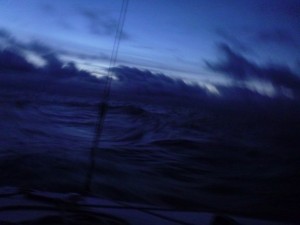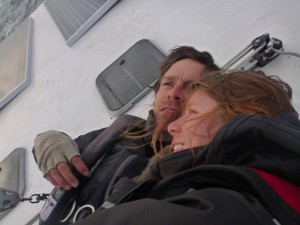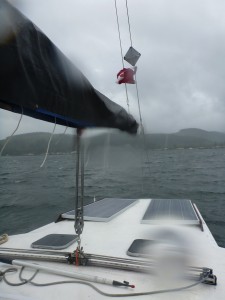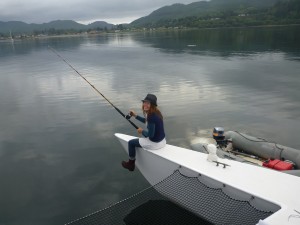We were in San Diego for almost two months, but that time seemed to blow past us at an extremely accelerated pitch. Our ‘Cruising Permit’ (the customs paperwork allowing the TIE Fighter to remain in the US while being a Canadian-flagged vessel) would expire February 1st, so we had to hustle if we wanted to get all the pending projects completed before we left for Mexico, where everything would be an order of magnitude more complicated!
When we originally cleared customs in Port Angeles, Washington back in September, the customs officer asked how long we’d like the permit to be – we laughed and told him that we intended to be in Mexico before Christmas. He nodded and said
“I’ll just give you a couple of extra months anyway, just in case you run into bad weather…”
I guess he must had some experience with that sort of thing…
Anyway! On to the photos!
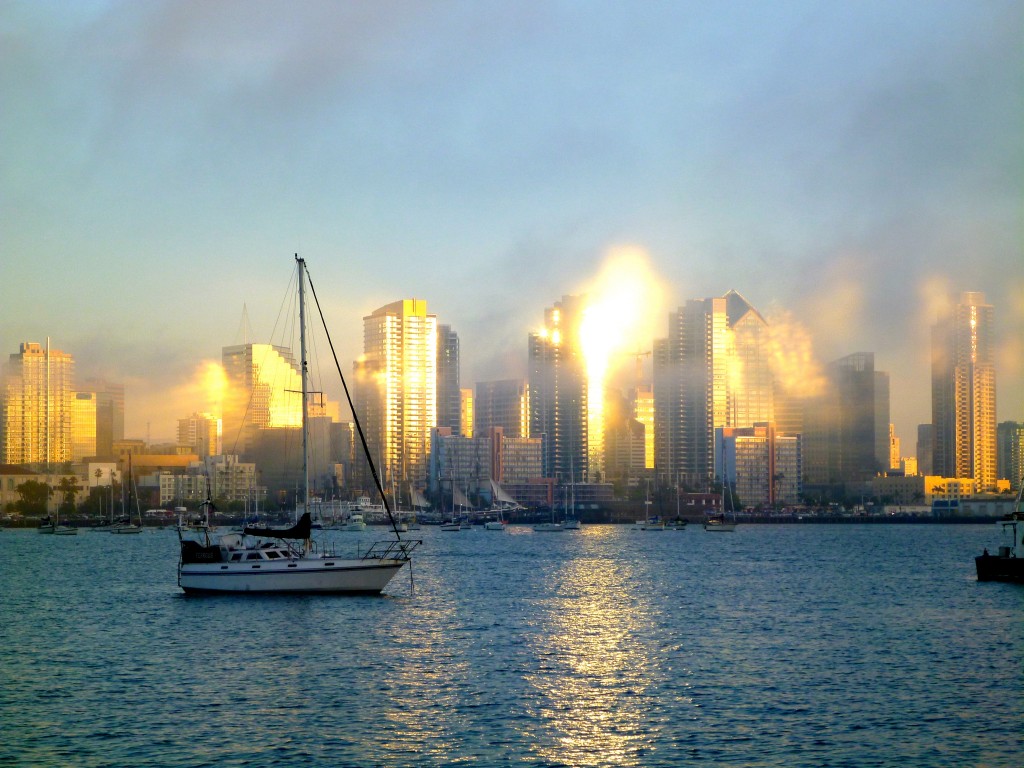
San Diego, despite being a bizarre mix of old-money Republicans and impressionable young military personnel from the midwest, had its moments of beauty. Click this photo for the full-size version; check out the sunbeams reflecting off the mirrored buildings and through the early evening fog bank!
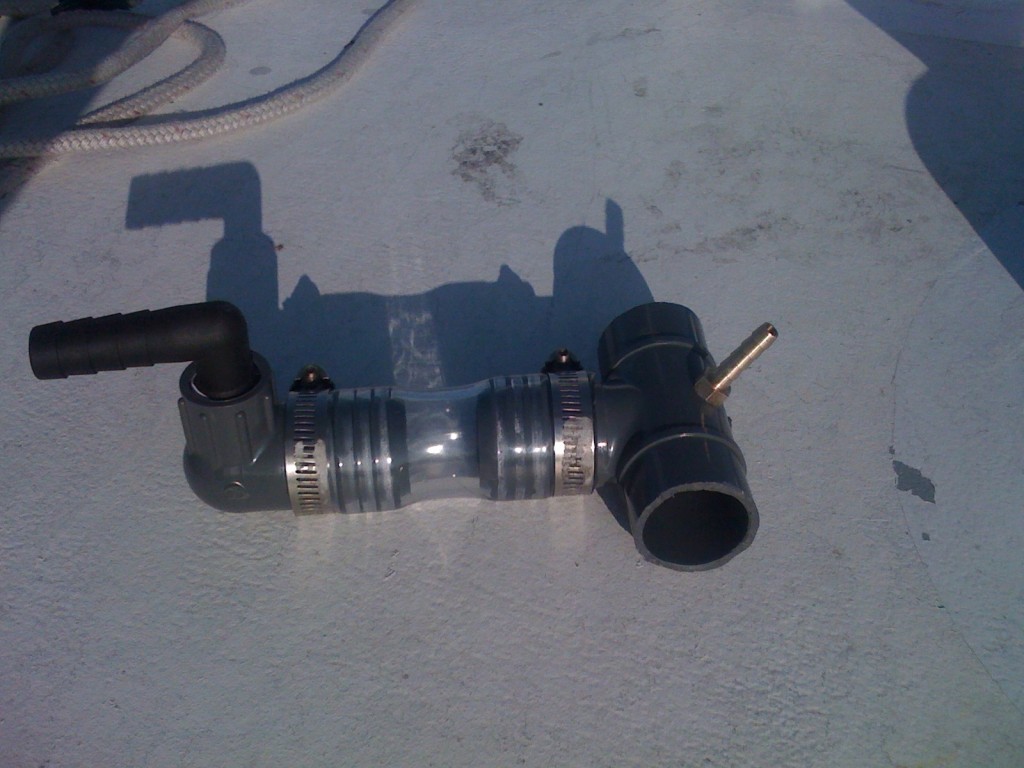
At no point did we expect that the water maker install would be simple, but I have to admit I was expecting all of the parts to be readily available. That wasn’t really the case, and I had to build this fitting to attach the product water feed to the tank inlet, while also adding a vent line so that the water maker water feed will never see more than 3psi in back pressure – apparently that would irreversibly damage the water maker membrane, which is a very expensive replacement.
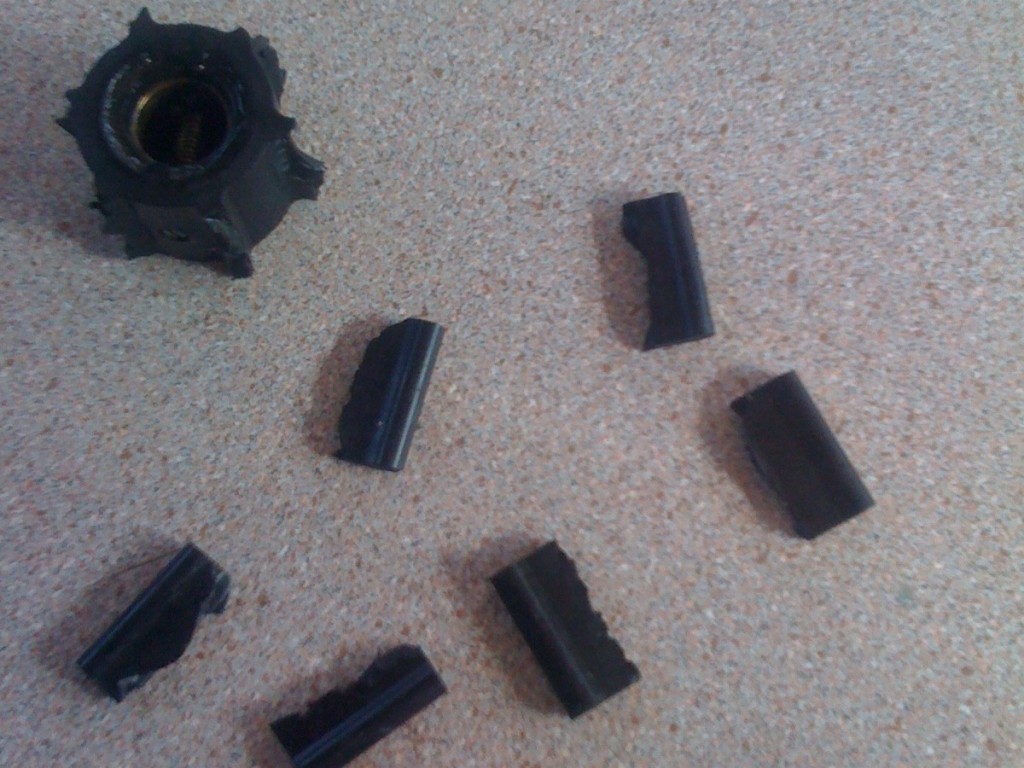
One night just before Christmas, just prior to having the water maker up and running, we decided to make a run to the fuel dock to fill up our water tanks. We made it out of the A9 anchorage and around the corner a few hundred meters when suddenly our engine alarms started screaming…
We blew the seals on one of our freshwater pumps on the way down – it was still working, but leaking coolant. I had a guy in San Diego rebuild the pump ($50 instead of a $400 new pump), but when I reattached the pump I didn’t properly bleed the air out of the coolant lines. A brand-new impeller was just spinning away with nothing to pump, and it was destroyed within minutes.
Mostly I’m impressed with myself, that I was able to determine the cause of the problem and fix it within about an hour, without having to call for help or even consult any manuals. That kind of thing really helps with a person’s confidence in taking their vessel far offshore.

As it turns out, Tijuana is a $2.50 public-transit train ride from downtown San Diego, and so we decided to take a brief day trip south of the border. Tijuana is everything that I dislike about Mexico, condensed into a single city – a stark contrast to La Paz, which is absolutely nothing like it.

Between hundreds of shopkeepers (all bafflingly selling the exact same items for the same prices) yelling at us to come into their stores and restaurant owners offering cheap tequila (followed by “I’ve got something for your nose, amigo!”), there were random street “displays”. This one, a burro spray painted with zebra stripes, was apparently available for tourists to take their photo with… for a fee, of course.

The first step to arriving in a new city is to figure out where the basics are coming from – internet, showers, groceries, laundry, etc. Most of the facilities were a good five kilometres away from the anchorage, however, so we made the most of our time and split up the tasks between us. This is Miya, with all of our laundry packed into a series of heavy dry bags and our collapsible pull cart, headed for the laundromat.
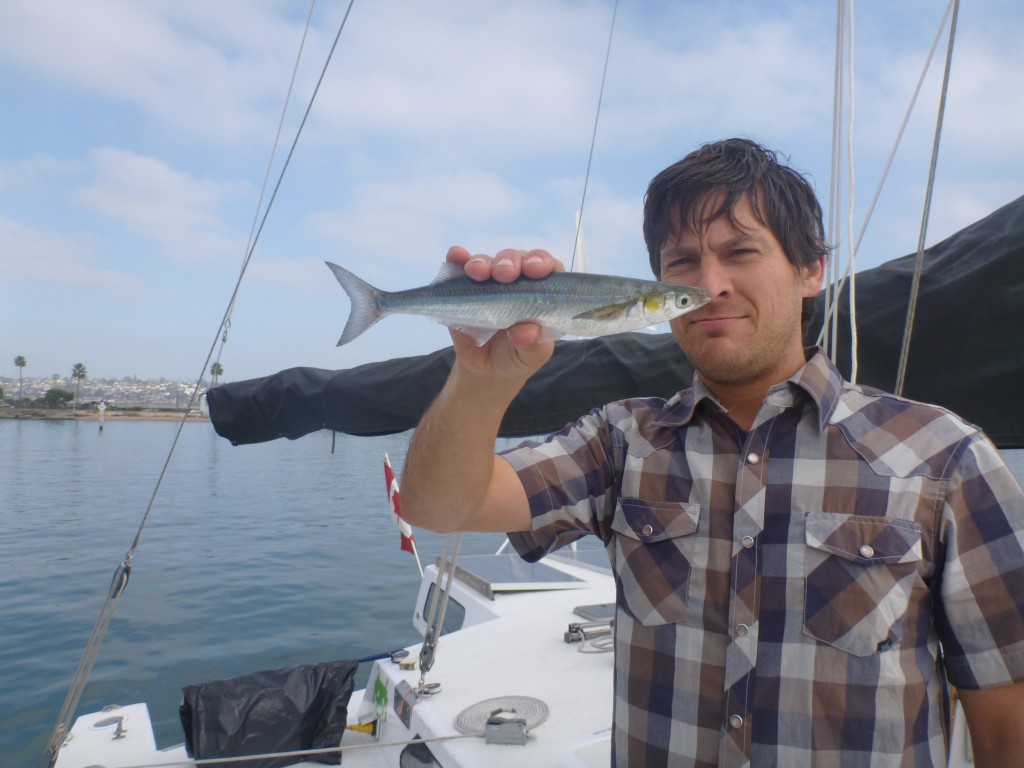
In my last post, I began by describing hundreds of tiny acrobatic fish hurling themselves at the side of the boat. Later that day I discovered that several of the fish had leapt into the dinghy! The internet told us that these fish were mackerel, but unfortunately it also told us that you should never eat fish that you’ve found dead; there would be no way to know how long the fish had been dead. Pity I hadn’t looked into the dinghy earlier, these little guys would have made for a delicious breakfast.
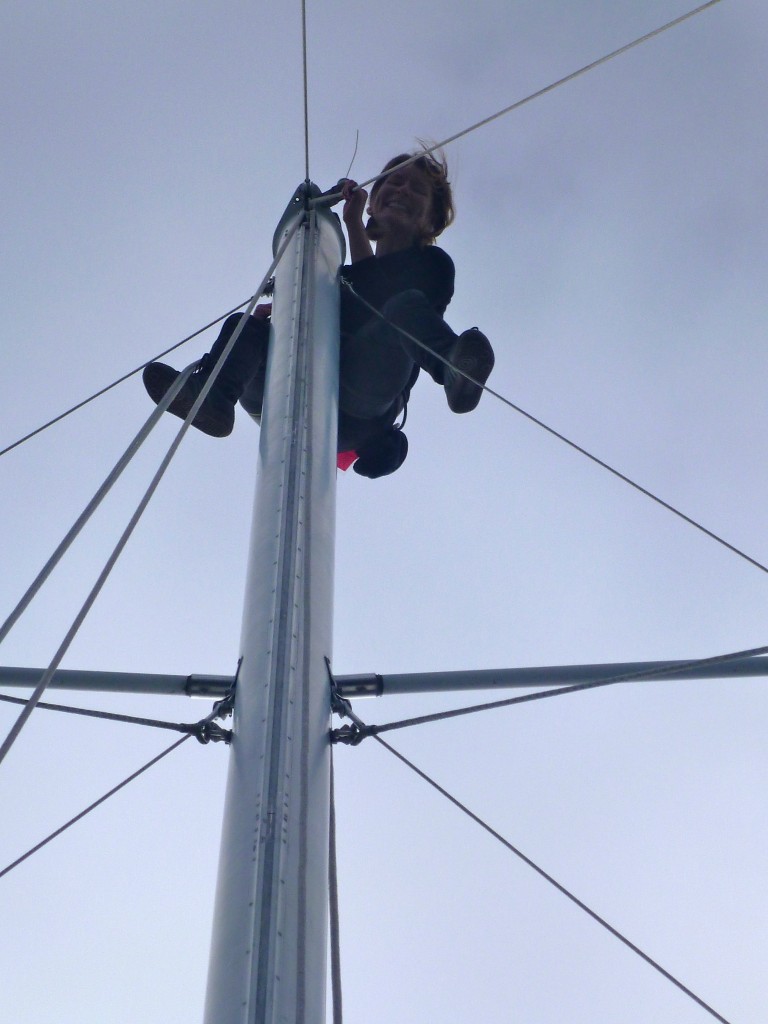
One of the biggest projects I wanted to have completed before leaving offshore was the ham radio install. This required several trips up the mast; one to affix a temporary backstay (length of steel cable holding up the mast) to measure the length of the new antenna, one to take down the temporary backstay, and one to affix the new backstay.
After hoisting me up the mast with our largest winch, Miya decided that it would be easier for both of us if she went up and I manned the winch.

The pelicans in San Diego were pretty much completely unafraid of humans, and would regularly surround our boat during their fishing expeditions. A few times they almost appeared threatening…

When we realized that the Grand Canyon was a short-ish eight-hour car ride away, and that we’d be unlikely to be anywhere near as close to it every again, we decided to take a few days and go on a road trip. Despite the cold January air, the canyon was everything that television and movies made it out to be: a very large, very beautiful hole in the ground.
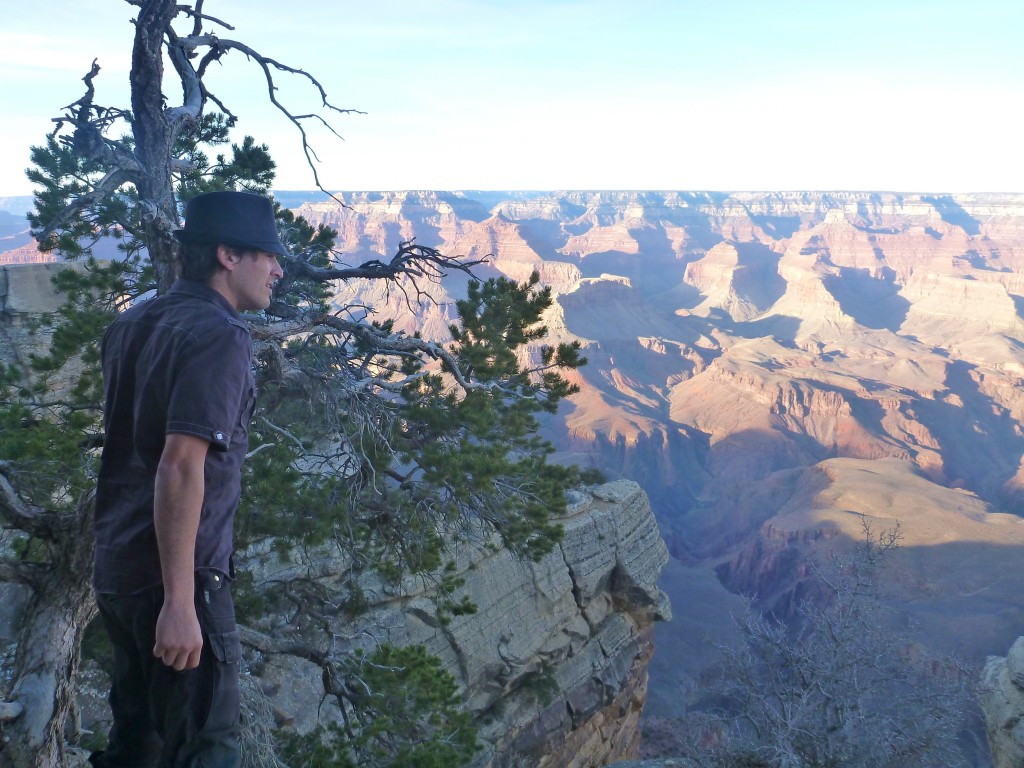

This is us enjoying the last moments of warm sunshine, just prior to the sun falling below the horizon and sending us sprinting for the car and warm sweaters. The desert gets COLD at night!
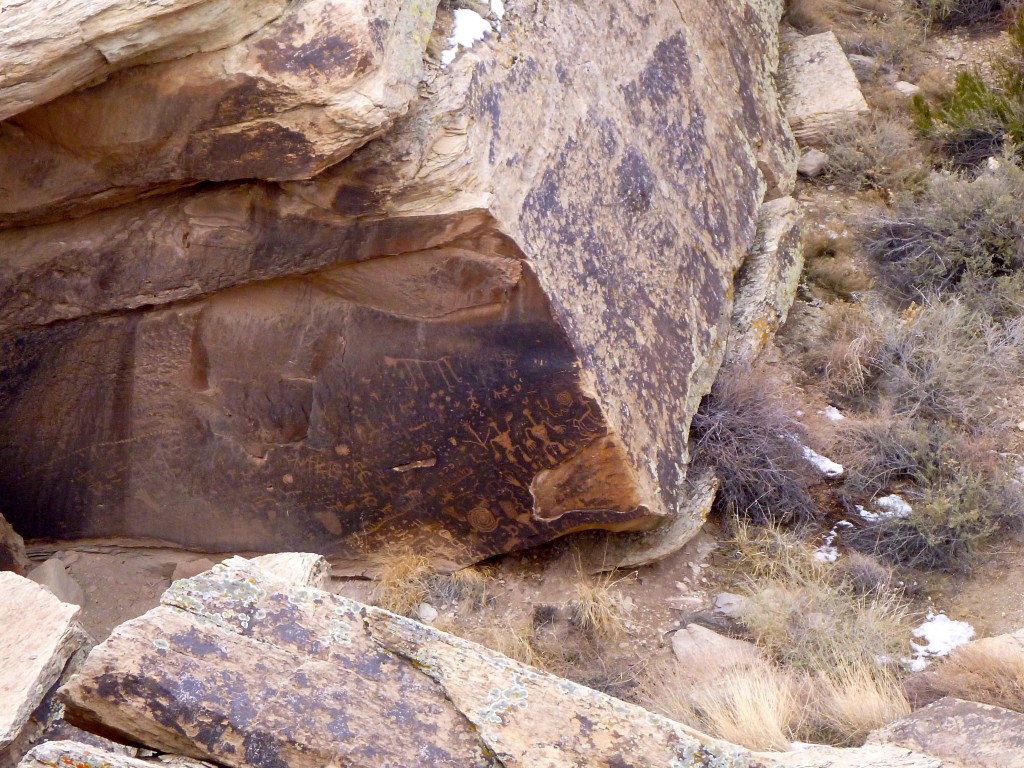
The canyon was nice, but to be honest we preferred the drive through the Painted Desert and the strolls through the petrified forests. If you click this photo and look right at the centre, you can see the 6000-year-old drawings on the side of this boulder, known as “Newspaper Rock”.
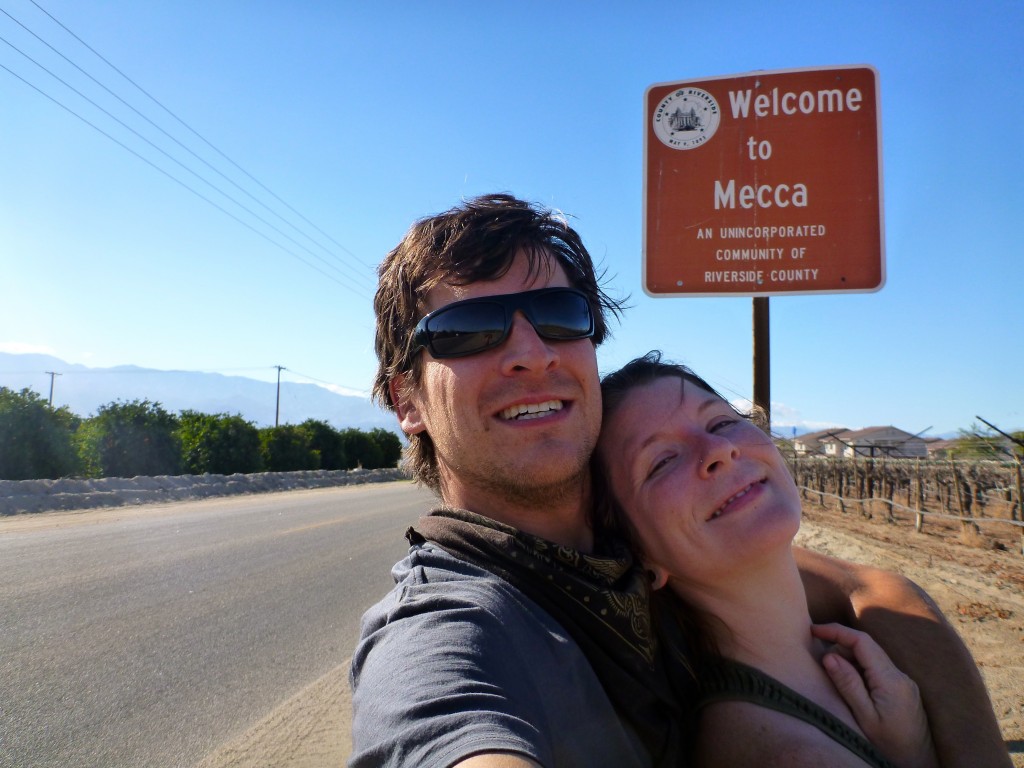
Miya and I have a habit of visiting places with identical names to larger, more famous places; in 2011 we visited Moscow and Paris, both in Idaho.

Salvation Mountain, at the entrance to Slab City (as seen in the movie “Into The Wild”) was probably the highlight of the epic January road trip. The life’s work of a devout born-again Christian artist, the mountain is made from found materials, mostly dirt, hay bales, wood and leftover paint… lots and lots of paint.
Slab City was fascinating as well, though less photogenic – a squatter community in the desert, completely off the grid and self-reliant, on concrete slabs left over from an abandoned military base. I could see myself spending time there, especially if it were with a group of like-minded adventurers.
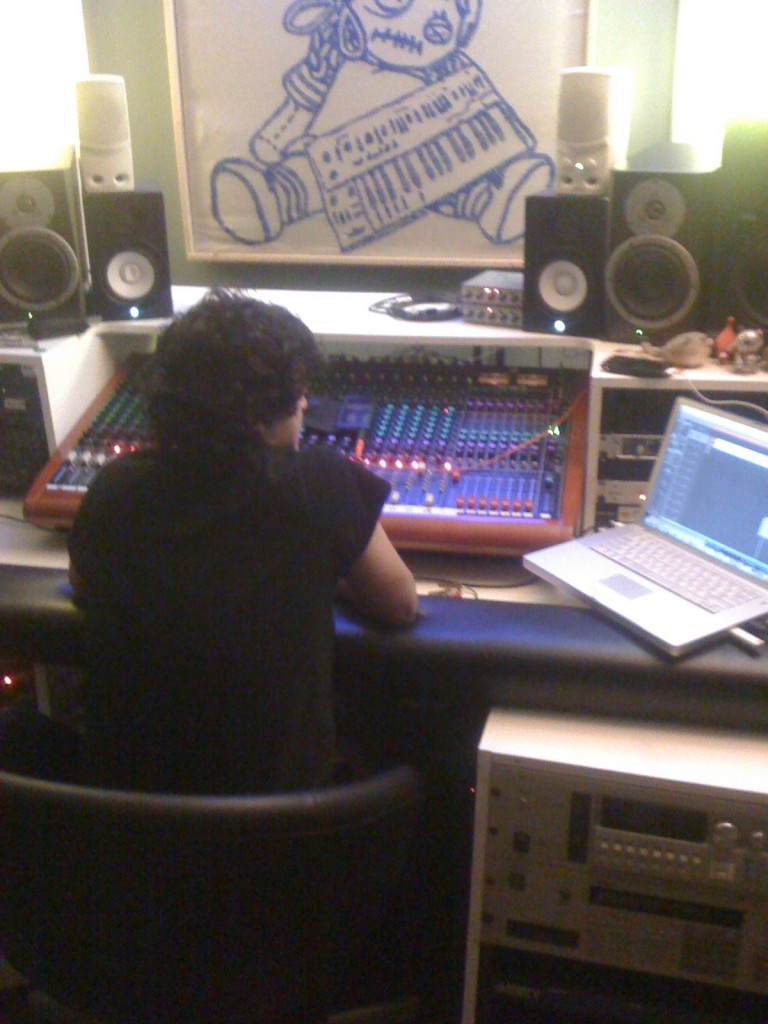
Following the trip to Arizona, we jumped a plane and headed to Vancouver to help throw Sequential Circus 10, an event series that I’ve been throwing (well, with the heavy assistance of a group of close friends and dedicated volunteers) for the past five years or so. In this photo, Rich Hamakawa is recording voiceovers (in the booth, the vocal talents of France Perras) for use as the introductions on each of the podcast recordings. Sitting in the TopFloorUnderground studios with good friends and a bottle of nice tequila is a fine way to spend an afternoon.

I have to admit, we do throw a helluva party. This is Drew ‘Vespers’ Betts performing for a packed dancefloor. All of the performances at Sequential Circus shows are live acts.
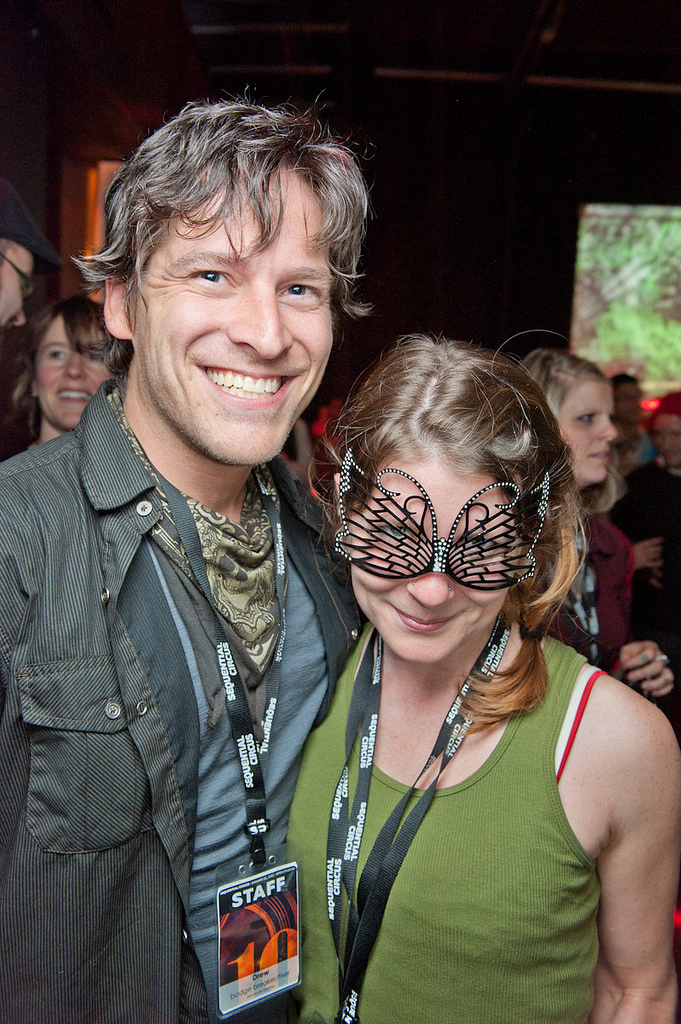
Much fun was had by all – thanks for the great photos, Luke! Much more of his most excellent work can be found on his Flickr site.

Back to San Diego and back to the grind – with only a few short days left until we left, I had my hands full with important travel-related boat projects, like finishing the water maker install and getting the ham radio up and running and retrieving up-to-date weather info. Miya took advantage of the boat being in “project mode” to make a mess on the deck, building her custom garden boxes. It’s worth noting that Miya’s blog, http://www.thenomadist.com, has lately been far more up-to-date than my own. 🙂
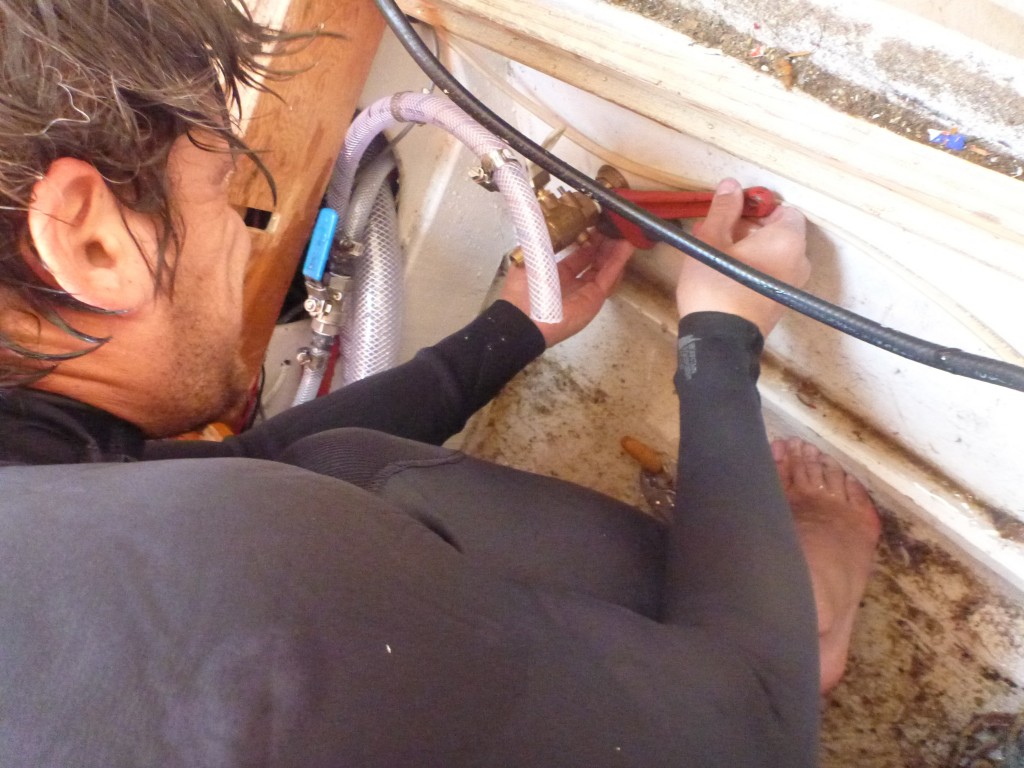
The hardest part of the install was the through-hull that needed to be installed below the waterline. Normally this would require a haul out, but we decided to try it in the water. I plugged the new brass scoop fitting with a small softwood plug, got all the tools and fittings ready, and then did the unthinkable: I drilled a hole into the bottom of the boat directly into the ocean!
I figured that given the balmy San Diego weather the water would be warm enough to do the install in just my swimsuit, but once I jumped in I quickly changed my mind and switched to my wetsuit. In the end verything went smoothly, and overall we only had about four litres of seawater pour into the bilge.
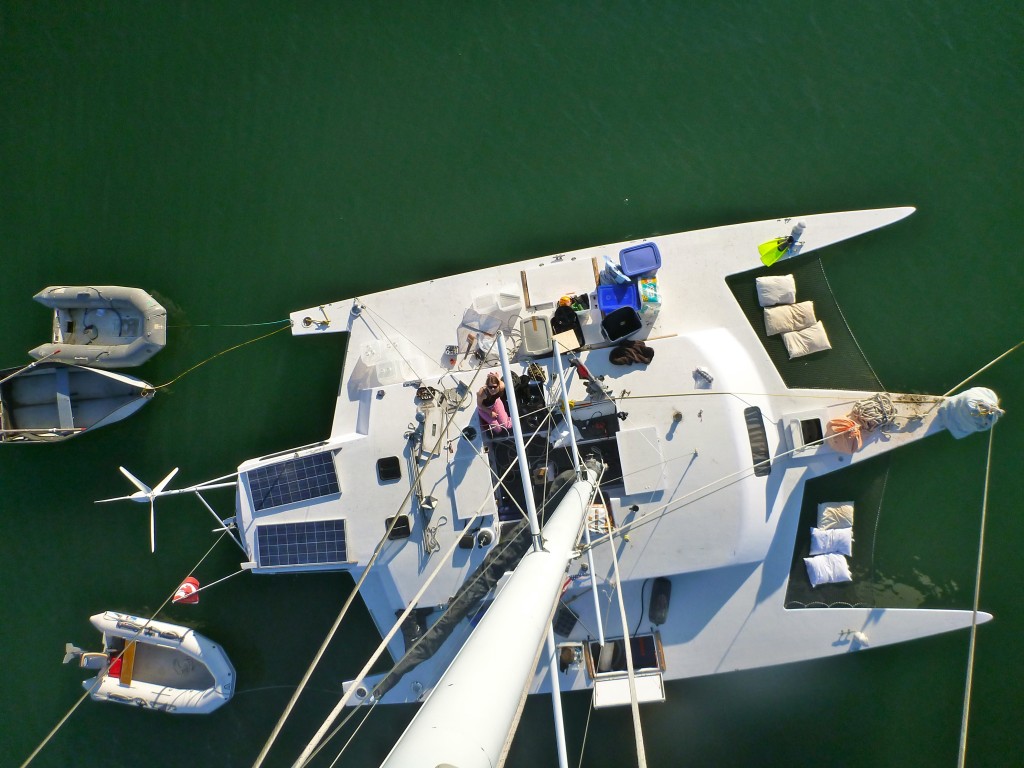
The project days were fruitful, and if you click into this photo you can see many of them on the go – the flippers on the deck from the water maker install, the detritus from the garden construction, pillows out on the bow nets to air out, the blue bins of winter clothes out in preparation for cold offshore nights, the new Achilles dinghy and the old Zodiac dinghy alongside our venerable folding “beater” row dinghy… so much going on in this photo!
And that brings us to the end of January! One more blog post to go and I should be actually up to date and back to posting about things as they happen, instead of posting about them two months later…

